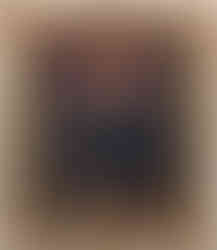Henrique Medina - Gifted Gallery
- Lilium
- Nov 8, 2023
- 3 min read

Henrique Medina de Barros, born 18 August 1901, in Porto, was a Portuguese painter, best known as a portraitist.
At the age of 10, he was introduced to professor José de Brito from the Escola de Belas Artes do Porto (Fine Arts School of Porto), who supposedly, surprised by his ability, allowed him to attend his classes. He also took classes with Acácio Lino and Marques de Oliveira.
In 1919, he interrupted his studies in the Escola Superior de Belas Artes do Porto, and resumed his education in Paris, where Fernando Cormon and Bérard were among his teachers. He remained in Paris for seven years. Medina was an academic painter during Modernism, and his subsequent career as a portraitist had an international reach.
He lived in London for ten years, before arriving in Rome, where he painted Mussolini's portrait. In carrying out this work he held five morning sessions in the dictator's office, which did not interrupt his work. He traveled to São Paulo, Buenos Aires, Madrid, came back to Paris and traveled to Stockholm. On May 10, 1930, he was made a Knight of the Military Order of Christ.

He was Invited to work in Brazil where he painted representative figures of society such as ambassador Nobre de Melo and writer Carlos Malheiro Dias. He also worked in Buenos Aires, receiving commissions for portrait including the biologist Francisco Jauregui (1934). On 9 April 1936, he was made an Officer of the Military Order of Sant'Iago da Espada.
He eventually moved to the US while still maintaining a studio in Portugal. While in the US, he befriended Charlie Chaplin, Walt Disney, and Mary Pickford among others. He lived in Hollywood, California for six years and painted actresses' portraits including Greer Garson, Linda Darnell, Mary Pickford, Madeleine Carroll and Ann Miller. He also painted musical names such as Jeanette MacDonald, Lily Pons and Amelita Galli-Curci, these last paintings are on display at the Metropolitan Opera House in New York. He was also commissioned for the painting of Dorian Gray in the MGM film The Picture of Dorian Gray (1945), staring Hurd Hatfield, and the portrait of Greer Garson used in the film Mrs Parkington (1944), which is part of the Metro Goldwin Mayer museum.

Leaving American, he returned to Europe, painting in Sweden, Denmark and Spain. He carried on to Great Britain and Northern Ireland, to move again with the Second World War to Brazil and the United States where he spent 7 more years. On July 2, 1969, he was elevated to Grand Officer of the Military Order of Sant'Iago da Espada.
In his youth, Medina had spent vacations in his family's house in the suburbs of Marinhas, located in the municipality of Esposende. In 1974, at the age of 73 he returned to Esposende to live, and to paint portraits of rural life. Today, the secondary school of Esposende is named "Escola Secundária Henrique Medina" (Secondary School Henrique Medina) in his honour and his studio is now a museum. The largest collection of his works is in Braga, at the Medina Museum, and is composed of 50 oil paintings and drawings, bequeathed by Medina in 1982 to the Archdiocese of Braga.
Throughout his career in Portugal Medina painted five presidents of the Republic: António José de Almeida (1932), Óscar Carmona (1933), Sidónio Pais (1937), Canto e Castro (1937) and Américo Thomaz (1957), and men of science such as Egas Moniz (1950) and José Gabriel Pinto (1957).
He also painted the composer Cláudio Carneiro (Paris 1921), Cardinal Manuel Gonçalves Cerejeira (1934), António de Oliveira Salazar (1939), the bishop of Porto António Ferreira Gomes (1981) and the Archbishop of Braga Eurico Dias Nogueira.
Henrique Medina died 30 November 1988, aged 87, in Porto, Portugal. On 11 February 1984, he had been awarded the Grand Cross of the Order of Infante D. Henrique, The Order of Prince Henry is a Portuguese order of knighthood created on 2 June 1960, to commemorate the quincentenary of the death of the Portuguese infante Prince Henry the Navigator, one of the main initiators of the Age of Discovery.
Reading Recommendations & Content Considerations




















































































































Comments